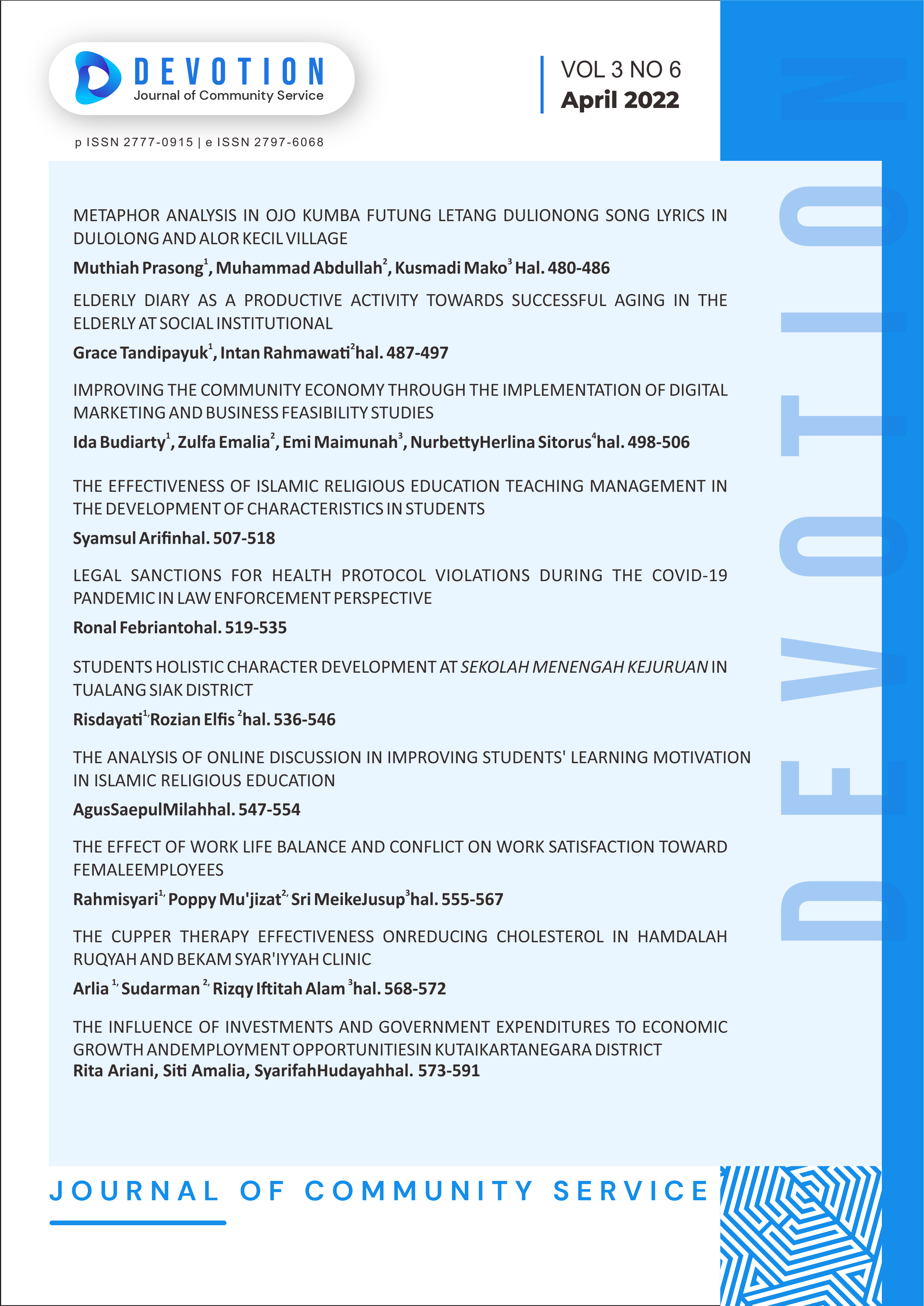Margin Analysis and Marketing Efficiency of Bali Cattle Post Covid-19 Pandemic
DOI:
https://doi.org/10.36418/dev.v3i6.207Keywords:
Margin, Efficiency, Bali Cattle, Covid-19 PandemicAbstract
This research is a literature study on margins and marketing efficiency. This study aims to analyze the margins and marketing efficiency of Bali cattle post covid-19 pandemic. The research method used in this study is a qualitative descriptive method. The type of data used in this study is qualitative data, which is categorized into two types, namely primary data and secondary data. Sources of data are obtained through library research techniques (library study) which refers to sources available both online and offline such as scientific journals, books, and news sourced from trusted sources. The results of the study concluded that based on the marketing margin, farmer's share, and the efficiency of the marketing channel pattern that had been carried out, it was concluded that the Bali cattle marketing system was efficient. This can happen because it is influenced by several factors, namely the general condition of Bali cattle business actors.
Published
Issue
Section
License
Copyright (c) 2022 Ni Made Ayu Gemuh Rasa Astiti

This work is licensed under a Creative Commons Attribution-ShareAlike 4.0 International License.
Authors who publish with this journal agree to the following terms:
- Authors retain copyright and grant the journal right of first publication with the work simultaneously licensed under a Creative Commons Attribution-ShareAlike 4.0 International. that allows others to share the work with an acknowledgement of the work's authorship and initial publication in this journal.
- Authors are able to enter into separate, additional contractual arrangements for the non-exclusive distribution of the journal's published version of the work (e.g., post it to an institutional repository or publish it in a book), with an acknowledgement of its initial publication in this journal.
- Authors are permitted and encouraged to post their work online (e.g., in institutional repositories or on their website) prior to and during the submission process, as it can lead to productive exchanges, as well as earlier and greater citation of published work.













